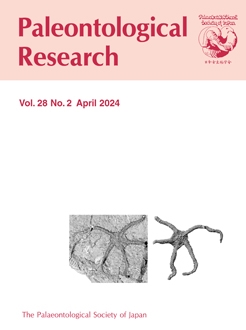The Upper Pliocene Motojuku Group (ca. 3.5 Ma) is a well-known Japanese insect fossil locality distributed in the border area between Gunma and Nagano prefectures. Here, we report Tetrapentatoma nishizawai gen. et sp. nov., a new fossil genus and species of the true bug or heteropteran family Pentatomidae from the “Kabutoiwa Formation” of the Motojuku Group. The specimen exhibits morphological characteristics typical of the subfamily Pentatominae of the family except for its distinct four-segmented antennae. The new genus is asserted to be a member of the Pentatoma-complex (included in the tribe Pentatomini of Pentatominae) and is distinguished from the other pentatomid genera by the following characteristics: body approximately 25 mm, broadly ovate; head tongue-shaped; mandibular plates reaching a level of apex of clypeus; antenna four-segmented; antennal segment II longest among segments, 1.4 times as long as segment III; scutellum subtriangular, reaching posterior margin of abdominal tergite VI; hemelytral vein inconspicuous; and connexivum with dark spots. This discovery is the oldest fossil record of the Pentatoma-complex.
How to translate text using browser tools
17 May 2023
A New Genus and Species of Pentatomidae (Hemiptera) from the Upper Pliocene “Kabutoiwa Formation” in Gunma Prefecture, Japan
Hiroaki Aiba,
Jun Souma,
Yui Takahashi
ACCESS THE FULL ARTICLE

Paleontological Research
Vol. 28 • No. 2
April 2024
Vol. 28 • No. 2
April 2024
Kabutoiwa Formation
Motojuku Group
Pentatoma-complex
Pentatomidae
Pliocene
stink bug




